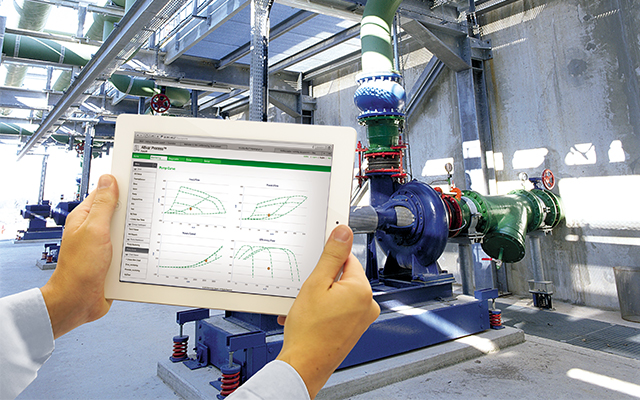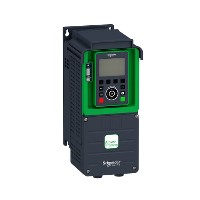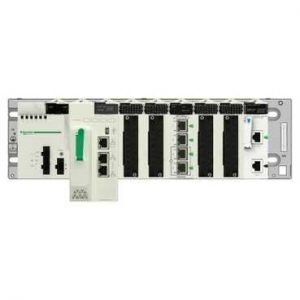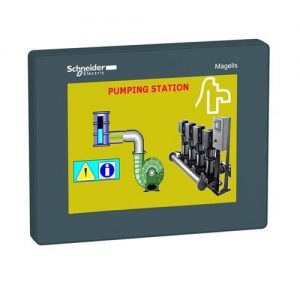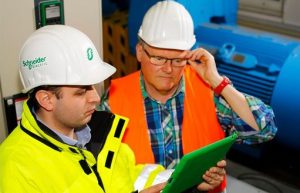Modern VFDs enable remote monitoring through a SCADA system or wirelessly through a tablet or mobile phone.
Authors: Maurizio Rovaglio, Vice President, Oil & Gas Technology and Alliances, Schneider Electric, and Jack Creamer, Market Segment Manager, Pumping Equipment–Industry Business, Schneider Electric
Industrial Internet of Things (IIoT) concepts are transforming the Oil & Gas industry business model in fast and dramatic ways. How Oil & Gas companies and their OEM/supplier counterparts respond to these changes and to other trends (e.g., growth in popularity of renewable energy) will determine both the short and long-term survival of their organizations.
Most Oil & Gas executives and their suppliers are beginning to think and act differently than they have in the past. Recent developments in the area of the IIoT are facilitating changes that can result in the reduction of unit costs of oil production and ultimately higher returns on capital employed. The profound technology changes that are just beginning to manifest themselves, will result in an Oil & Gas industry that will be stronger and leaner, as well as more digital and dynamic.
The backbone of the transformative IIoT trend is the linkage of connectivity, cloud, and analytics technologies to simplify process automation. Opportunities to link multiple platforms operated remotely from a single onshore center or to deploy remote monitoring for onshore and offshore operations can dramatically reduce the need for physical on-site inspections.
Disruptive Digital Technologies
By employing disruptive digital technologies, Oil & Gas decision-makers and their suppliers can optimize CAPEX and/or OPEX while providing technologies, infrastructures and services that enable the transition towards a more sustainable business. The disruptive technology delivering on the IIoT promise are available today and the instillation of just a few of connected solutions can transform an existing operation into a smart IIoT-enabled solution.
Today’s VFDs, can save up to 30% energy when connected to a pump compared to traditional fixed speed pumps. Whether related to operational cycle variability, fill rate optimization, or additional VFD centric benefits, manufacturers and their suppliers can greatly reduce upstream costs and enhance efficiency, resulting in increased profitability even with declining oil prices. Further, these drives add connectivity that allows for remote monitoring from a central location or from the field. This smart pump combination enabling operators to take action, perform inspection and/or maintenance, and remain conscious of the pumping systems’ energy usage.
As the concept of “smart pumping” continues to evolve, the Oil & Gas industry is embracing these solutions to help reduce the upstream costs. At the heart of this concept is the PLC, or the “brains” of the system. While “intelligence” can and does reside in additional spaces such as VFDs and HMIs, the PLC provides the intelligence to pull all the pieces together and provide both local and remote communication. Traditionally used to simply monitor a process, they now have been adapted to provide inputs that greatly reduce the TCO of the pumping system.
New technology in HMIs allow for connecting to everything smart in the system – communicating with PLC, VFDs, intelligent sensors, and so on. As the window into the machine or process, this allows operators to check system status and make adjustments from the control panel or remotely through a tablet or mobile device. Again providing significant reduction in System TCO.
In the Upstream Oil & Gas world, many of the production sites are typically in remote areas where local control and monitoring is expensive and/or impractical. Cloud connectivity allows operators to remotely monitor operating conditions and employ preventative maintenance procedures to update, improve and reduce maintenance costs.
Having the connected, smart solutions within an operation is the first step. The second is ensuring that all the pieces in the system are communicating – sharing information between each other and to those monitoring them. The final step is optimizing those solutions to a specific operation. Trained technicians are needed to help establish parameters, set data points and match outputs to optimize this new technology to see the greatest results for each operation.
The deployment of IIoT solutions translates into increased intelligence throughout the process workflow, more accurate and granular data collection and analytics, and higher levels of automated control and decision making. Deployment of these technologies can be viewed as disruptive to the traditional way of conducting business. In the end, however, IIoT approaches will help companies establish new benchmarks in efficiency (including energy efficiency), and productivity while fostering collaboration.
This article is part of a nine-part series looking at how the Industrial Internet of Things (IIoT) concepts are transforming the Oil & Gas industry business model. For more information, please visit: goo.gl/4ohXN7.
READ PART 1 | READ PART 2 | READ PART 3 | READ PART 4 | READ PART 5 | READ PART 6 | READ PART 7 | READ PART 8
About the Authors
Maurizio Rovaglio is Vice President of Oil & Gas Technology and Alliances at Schneider Electric in Italy. Mr. Rovagilo holds multiple patents and has authored over 100 technical articles published in international scientific journals, and has delivered presentations at multiple international conferences. Mr. Rovaglio has over 15 years’ experience in software sales, marketing, resource planning and project execution in the O&G domain across the world.
Jack Creamer is Schneider Electric Segment Marketing Manager – Pumping Equipment, based in the United States. Mr. Creamer has more that 30 years in the Electrical Industry, and has been involved for 10 years in the Pumping Industry. He is involved in key industry organizations such as the Hydraulic Institute and Submersible Wastewater Pump Association, where he holds both Committee Chair and Board level positions. In his time in the Pump industry, he has help Schneider create numerous solutions that both enhance pumping efficiency and address issues such as maintenance and downtime.

